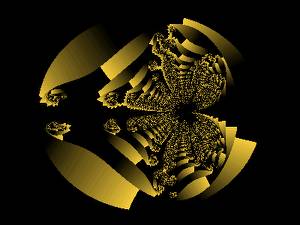 Question: what do Lindbergh, Ghandi, Hitler, Stalin, Queen Elizabeth II, Nixon, Ayatollah Khomeini, George W Bush and you all have in common?
Question: what do Lindbergh, Ghandi, Hitler, Stalin, Queen Elizabeth II, Nixon, Ayatollah Khomeini, George W Bush and you all have in common?Answer: They, and you, have all been named Time magazine’s Person of the Year.
Time has been giving the title for the last 50 years to the person who they believe had the greatest impact on the year's events. It aims to pick "the person or persons who most affected the news and our lives, for good or for ill". You, though you may not have realised, are the current incumbent having been awarded the title in 2006. Time magazine deemed your impact greater than Iranian President Mahmoud Ahmadinejad, Chinese leader Hu Jintao and North Korea's Kim Jong-il who were all deemed 2006 runners-up.
You, in Time’s context, are the second person plural that includes everyone on the Internet. More precisely the title recognises the impact of Web 2.0 and the growing online democracy. In Time’s own words, 2006 has been “a story about community and collaboration on a scale never seen before.” In particular they cited bloggers, podcasters, social networkers and video makers who they described as “millions of minds that would otherwise have drowned in obscurity get backhauled into the global intellectual economy”. It also extolled the contribution of such tools as Wikipedia, YouTube and MySpace.
The title dates back to a slow news week at end of 1927. The editors came up with a concept of “Man of the Year” and the initial award was given to Charles Lindbergh in honour of the first solo trans-Atlantic flight earlier that year. Lindbergh was the first real 20th century hero America so desperately needed in the twenties. It was also the chance to remedy the embarrassment of Time’s failure to put him on the magazine cover at the time of the historic flight.
Although the name remained Man of the Year until 1998, several women have received Time’s gong. The Queen was anointed in 1952, the year she acceded to the throne. Before her, a more controversial British royal Wallis Simpson was the first woman to take the award in the abdication year of 1936. Other "non-men" to take the title were the Hungarian Freedom Fighters for the uprising of 1956, US scientists in 1960, “twenty five and under” (what we now call Baby Boomers) in 1966, the “middle Americans” in 1959, “American Women” in 1975 and “the American Soldier” in 2003 (the year of the Iraqi invasion). In 1982 the Man of the Year wasn’t even a person at all, it was “the Computer”.
The title has attracted much controversy over the years. The fact that the impact can be “for better or worse” has seen Hitler, Stalin and the Ayatollah take out the “honour”. Khomeini was named Man of the Year in 1979, the year of the Iranian Islamic Revolution and the start of the American embassy hostage crisis. Time received immense criticism in the US for naming Khomeini as Man of the Year. As a result of the backlash, Time has shied away from naming unpopular figures ever since. Although the criteria for the choice is “the individual or group of individuals who have had the biggest effect on the year's news", the magazine editors ignored this in 2001. In the wake of 9/11, they named Rudolph Giuliani as Man of the Year over the more obvious choice of Osama Bin Laden.
2006’s choice has critics divided again. “You” is not universal. According to Internet World Stats internet penetration is far from ubiquitous. Whereas 70% of North Americans are connected, barely 3% have Internet access in Africa. And although there are over one billion people online world-wide, 87% of the world’s population still does not have access.
 Optimists hail the social transformation of web 2.0 and the active engagement medium of the Internet. These people hail user-driven content and see it as a portent for the arrival of the “participatory Panopticon”. The panopticon was Jeremy Bentham’s 18th century ideal jail where all prisoners could be constantly observed. But in the world of the participatory panopticon, this constant surveillance is done by the citizens themselves out of choice. The main tool will be high resolution camera phones creating internet moblogs in a form of “sousveillance” (or watching from below).
Optimists hail the social transformation of web 2.0 and the active engagement medium of the Internet. These people hail user-driven content and see it as a portent for the arrival of the “participatory Panopticon”. The panopticon was Jeremy Bentham’s 18th century ideal jail where all prisoners could be constantly observed. But in the world of the participatory panopticon, this constant surveillance is done by the citizens themselves out of choice. The main tool will be high resolution camera phones creating internet moblogs in a form of “sousveillance” (or watching from below).However others remind us that the panopticon metaphor is a prison model and that those in power will seek to maintain their great advantages in the 21st century. The harshest critics of “You” were the mainstream media who see participatory journalism as amateur interference on their profitable patch.
No comments:
Post a Comment